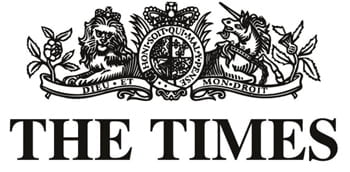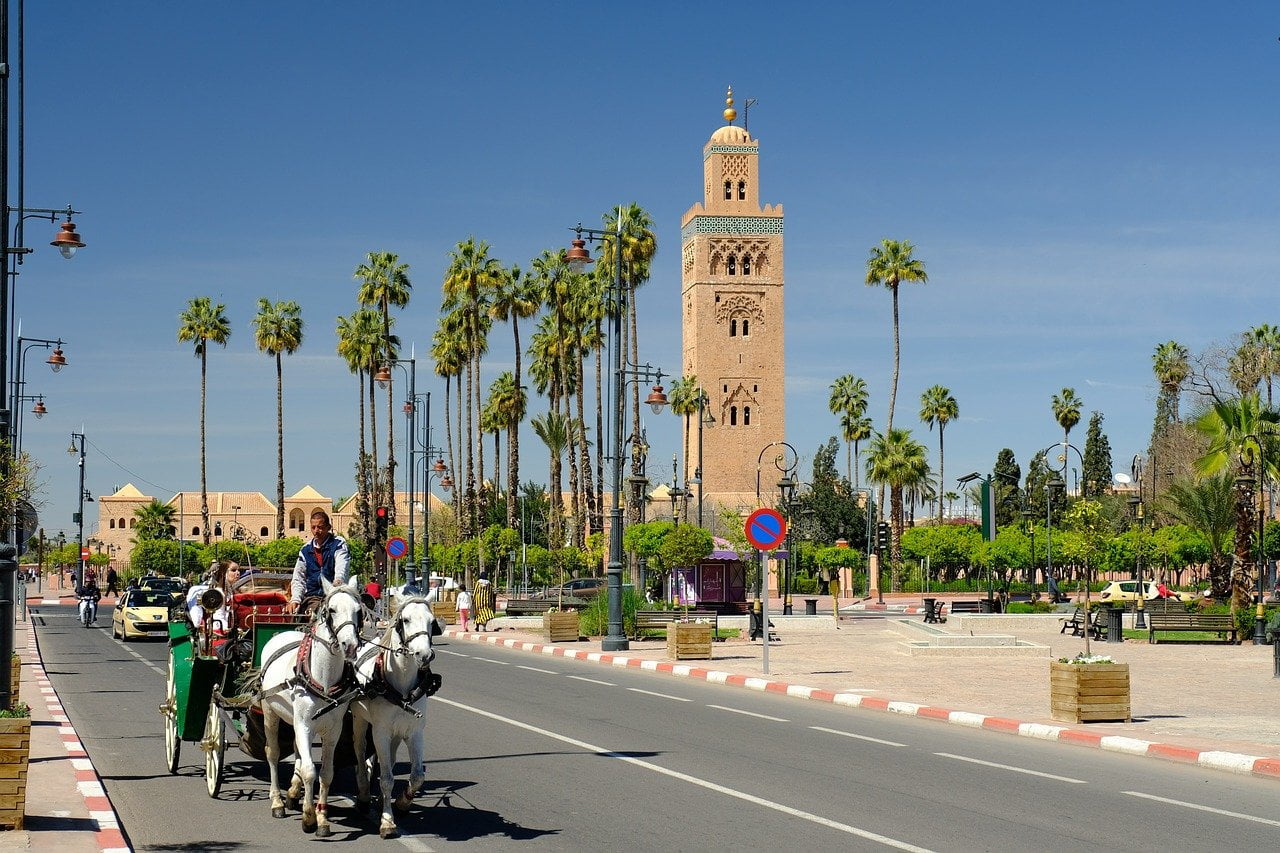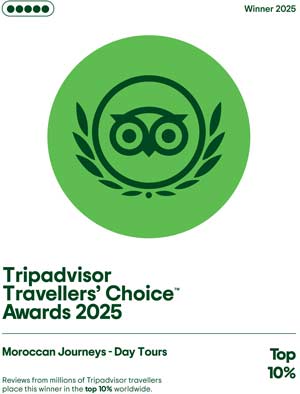Home » Discover Comprehensive Moroccan Travel Advice & Local Tips » What to Wear in Morocco: Dress Code & Packing Guide

As Morocco is both a Muslim country and a popular holiday destination, I’m often asked by our travellers what they should wear. Is it fine to dress as you would on any sunny getaway, or are there cultural norms to keep in mind? The short answer is: a little modesty and common sense go a long way. Cities like Marrakech and Essaouira are relaxed, while rural areas such as the Atlas and Sahara tend to be more traditional. This guide shares practical tips by season, region and activity—plus packing lists and outfit suggestions for both women and men.
Table of Contents
- Quick Answer: What to Wear in Morocco
- Seasons & Temperatures
- What to Wear in Cities (Marrakech, Fes, Casablanca)
- Religious Sites & Respectful Dress
- Atlas Mountains & Rural Villages
- Sahara Desert & Desert Camps
- Coast & Beaches (Essaouira, Agadir)
- What to Wear by Activity
- Packing Lists (Women & Men)
- Sun, Heat & Insect Protection
- Cultural Etiquette & Ramadan Tips
- Buying Clothing in Morocco
- Related Tours & Trips
Quick Answer: What to Wear in Morocco
Rule of thumb: keep shoulders and knees covered away from hotels and beaches, choose lightweight fabrics that breathe, and carry a scarf or light layer for cool evenings, sun and dust. Non-Muslim visitors do not need to cover their hair as standard, but modest dress is expected in religious spaces.
Loose trousers, long skirts or midi dresses, T-shirts with sleeves, breathable shirts, and a light jacket are all suitable for year-round wear. Comfortable closed shoes or sandals with a grip suit the medina’s cobbles; trainers or hiking shoes are helpful on rural paths. Swimwear is fine at pools and beach clubs; cover up when leaving the water.
Seasons & Temperatures
Morocco’s inland cities are hot and dry in summer and pleasantly warm in spring and autumn. Winters can be cool, especially at night, while the High Atlas can be cold year-round at altitude. Marrakech, as a guide, experiences average highs of around 37 °C in August and temperatures of around 19–21 °C in mid-winter. Coastal towns are milder and breezier.
| Season | Typical temps | Women | Men | Extras |
|---|---|---|---|---|
| Mar–May | Warm days, cool nights | Midi dresses, loose trousers, breathable shirts, light knit | Chinos/linen trousers, short/long-sleeve shirts, light jumper | Scarf Light jacket |
| Jun–Aug | Very hot inland | Lightweight long sleeves, airy maxi skirts, sunhat | Linen/cotton shirts, loose trousers, hat | High-SPF Sunglasses |
| Sep–Oct | Hot to warm | As spring; add a light layer for evenings | As spring; add light layer | Breeze scarf |
| Nov–Feb | Mild days, chilly nights | Long trousers, warm layer, waterproof for showers | Jeans/chinos, fleece or jacket, waterproof | Closed shoes |
What to Wear in Cities (Marrakech, Fes, Casablanca)

Cities are relaxed, but modest clothing is still considerate in souks, neighbourhoods and whenever you’re away from hotel pools. Aim to cover shoulders and knees, avoid sheer items, and bring a lightweight scarf. A breathable shirt or T-shirt, a midi dress or loose trousers are ideal. Comfortable shoes are a must on uneven streets.
- Women: midi dress with sleeves, jumpsuit with a light jacket, or trousers paired with a loose blouse.
- Men: Chinos or linen trousers with a short- or long-sleeve shirt; tailored shorts are suitable for resort pools but should be avoided in medinas.
Religious Sites & Respectful Dress
Non-Muslims cannot enter most mosques in Morocco. A notable exception is the Hassan II Mosque in Casablanca, which offers guided tours at scheduled times. Dress codes here (and at any religious site) are straightforward: cover your shoulders and chest; shorts must be above the knee. You’ll remove shoes to enter interior prayer halls; socks are handy.
A headscarf is not generally required for non-Muslim visitors; however, carrying a light scarf is useful for extra coverage if requested by staff.
Atlas Mountains & Rural Villages

Expect cooler air and intense sun, with freezing nights at altitude outside the peak summer season. Villages are conservative, so it’s best to keep your shoulders and knees covered. Layers are key: a breathable base layer, a mid-layer fleece, and a wind-resistant jacket. Footwear with grip helps on mule tracks and rocky paths.
If you’re short on time, our Atlas Mountains Day Trip packs in valleys, viewpoints and lunch in a Berber village—useful to test your kit before a longer trek.
Sahara Desert & Desert Camps

Days are hot and dry; nights can be surprisingly cool. Covering up with long sleeves and trousers protects against the sun, sand, and mosquitoes at dusk. A cotton scarf or cheich (turban) is invaluable against wind and dust. Closed shoes or sturdy sandals are suitable for soft sand; trainers are also acceptable for short walks.
Considering a desert stay? Experience our Erg Chigaga Luxury Desert Camp, featuring private tents, stargazing, and guided walks. You can also look at desert trekking activities, dining under the stars, and current tent & suite rates.
| Place / Activity | Recommended clothing |
|---|---|
| Medinas & souks | Covered shoulders and knees; breathable layers; closed shoes for cobbles. |
| Religious sites | Cover shoulders/chest and legs to below knee; modest top layer; socks for shoe-off interiors. |
| Atlas hiking | Moisture-wicking base, fleece, windproof hat, sunglasses, walking shoes/boots. |
| Desert camp & dunes | Light long sleeves/trousers; scarf/cheich; sunglasses; sturdy sandals or trainers. |
| Beach & coast | Swimwear at pools/beach clubs; cover-up when off the sand; a warmer layer for breezy evenings. |
| Hammam | Follow venue guidance: disposable pants/briefs are common; bring flip-flops. |
| Riads & restaurants | Smart-casual layers; shawl/light jacket for courtyards and rooftops after sunset. |
Coast & Beaches (Essaouira, Agadir)

Coastal towns are breezier and milder. Swimwear is fine at hotel pools and private beach clubs; a modest cover-up is considerate on public beaches. Evenings can be cool—pack a jumper or light jacket. If Essaouira is on your list, our Essaouira Day Trip is an easy way to add sea air to your itinerary, while Atlantic Surf Tour options suit active travellers.
What to Wear by Activity
City Walking & Day Trips
Choose breathable layers, sun protection and comfortable shoes. If you’re short on time, browse our Marrakech Day Trips including Aït Benhaddou, Ourika Valley and Ouzoud Falls.
Walking & Trekking
Moisture-wicking tops, light hiking trousers and a warm mid-layer are reliable choices. Explore our Walking & Trekking ideas, including the Atlas & Sahara Tour and Coastal Walking Tour.
Yoga, Spa & Retreats
Pack modest athleisure that covers torso and legs when moving between venues. Explore Yoga & Meditation Spa and Yoga Marrakech & Ouarzazate options.
Packing Lists (Women & Men)
| Item | Why it helps |
|---|---|
| Breathable long trousers/midi skirt | Modesty and sun protection in cities, villages and the desert. |
| Shirts & T-shirts with sleeves | Comfort and respectful coverage for markets and monuments. |
| Light scarf or cheich | Versatile cover for sun, sand and quick shoulders-cover. |
| Light jumper/fleece | Cool evenings in the desert, Atlas or on the coast. |
| Comfortable closed shoes | Grip and protection on cobbles and dusty paths. |
| Sturdy sandals or trainers | Breathable footwear for heat and soft sand. |
| Swimwear + cover-up | Resorts and beach clubs; cover when off the water. |
| Sun hat & sunglasses | High UV, especially inland. |
| High-SPF sunscreen & lip balm | Intense sun even in spring and autumn. |
| Insect repellent (50% DEET or picaridin) | Useful at dusk and near water. |
| Small daypack & refillable bottle | Hands-free wandering; hydration in dry heat. |
Sun, Heat & Insect Protection
Morocco’s sun is intense, and UV can be very high in summer. Covering skin with breathable fabric is cooler than bare shoulders in direct sunlight and reduces the risk of burns. Keep hydrated, take a midday break and wear a brimmed hat and sunglasses. Dusk can bring mosquitoes near water or in oases; wearing long sleeves and using repellent helps prevent bites.
Cultural Etiquette & Ramadan Tips
Morocco is family-minded and hospitable. Modest dress is appreciated in smaller towns and during Ramadan. During that period, some cafés change their hours, and it is considered polite to avoid eating or drinking on the street during daylight. Even outside Ramadan, covering shoulders and knees in conservative areas is a simple way to show respect.
Buying Clothing in Morocco
It’s easy to adapt your clothing to local styles. Consider a lightweight djellaba for cooler evenings, a cotton gandora (tunic) for relaxed days, or a simple cheich scarf for the desert. Souks in Marrakech and Fes offer a wide range of goods; fixed-price shops and co-operatives are a good option if you prefer not to haggle.
Related Tours & Trips
Looking to put your plans into action? Try these itineraries:
- Luxury Marrakech & Sahara Tour – city discovery and a desert camp stay.
- Luxury Desert Tour – dunes, camel options and sunset viewpoints.
- Sahara to the Sea Tour – a balanced combination of dunes and coast.
- Cookery Holiday – market visits and hands-on classes with local chefs.
- Marrakech Day Trips – flexible daily options from the city.
- Enquire now – tailor an itinerary to your dates and interests.
 Written by Moroccan Journeys
Written by Moroccan Journeys
Rebecca grew up in Africa and has spent her life travelling and working in the UK and around the world in both the corporate and personal development fields. She is the co-founder of Moroccan Journeys, alongside Mohamed Elhaoissi, and resides in both the UK and Morocco. She believes in the conscious management of business and the importance of personal growth. Rebecca is also a Reiki Master Teacher and runs Intensive Reiki Journeys in the Sahara Desert. She spends her free time exploring the untouched parts of Morocco to ensure Moroccan Journeys is eclectic and unique in its offering.
Atlas Mountains & Sahara Desert Tours

Atlas Mountains & Sahara Desert Tour
6 Day Holiday
Experience the best of Morocco with a Walking Tour of the Atlas Mountains and Sahara Desert. Hike through the Toubkal Region and reach the summit of Mount Outousse while learning about the Berber culture from a local guide. The journey continues with a visit to Ait Ben Haddou, a World Heritage Berber town that offers a glimpse into the country’s rich culture. The tour also includes a scenic drive through lush valleys, arid deserts, and enchanting palm groves of the Draa Valley, offering diverse landscapes and scenery. Finally, trek through the majestic dunes of the Sahara Desert, experience sleeping under the star-studded desert sky and witness the beauty of this magnificent landscape. This Morocco Walking Tour is a perfect blend of culture, nature and adventure that creates unforgettable memories.

Morocco Luxury Desert Tour
3 Day Tour
Experience a captivating adventure like no other with a Luxury Morocco Desert Tour. This extraordinary journey combines thrilling exploration and indulgent luxury for an unforgettable experience. Traverse the majestic dunes with a skilled off-road driver, taking in the awe-inspiring scenery along the way. Indulge in a delicious lunch amidst the vast expanse, providing the perfect opportunity to unwind and soak in the breathtaking surroundings. As the sun sets, embark on a camel trek towards the luxurious desert camp at Erg Chegaga. This secluded oasis boasts elegant tents and furnishings, offering a tranquil escape from the hustle and bustle of daily life. Immerse yourself in the magic of the desert as you enjoy a sumptuous dinner by a crackling campfire under a star-filled sky. The Luxury Morocco Desert Tour strikes the perfect balance between adventure and pampering, providing an ideal way to discover the wonders of the Moroccan Sahara.
Frequently Asked Questions
Loose long trousers, long-sleeve tops, light scarf, hat, sunglasses, closed shoes, sturdy sandals, warm layer, swimwear, high-SPF sunscreen, insect repellent, refillable water bottle.
Marrakech averages around 37 °C in August and 19–21 °C in winter daytime; the desert is hotter by day and colder at night.
Comfortable, modest clothing with hats, SPF 50 Sun Cream and sunglasses; long sleeves and trousers at dusk help reduce bites.
Dress a little more modestly than usual and avoid eating or drinking on the street in daylight. Tourist services still operate with minor schedule changes.
Closed shoes or sturdy sandals with grip for cobbles and dusty paths; trainers or hiking shoes for day trips and light treks.
Yes—choose a midi or maxi with sleeves or add a light cover for shoulders in medinas and villages.
Yes if paired with a long top or tunic that covers the hips. Avoid sheer styles.
Yes, but use a modest cover-up when you leave the beach or walk through town.
Swimwear at pools and private beach clubs is fine; use a cover-up off the sand. Evenings are breezy—bring a jumper or light jacket.
Layer up: breathable base, fleece, windproof shell and walking shoes or boots with grip. Villages are conservative—cover shoulders and knees.
Light long sleeves and trousers, a cotton scarf or cheich for sun and sand, sunglasses and sturdy sandals or trainers; add a warm layer for night.
Nights can be cool year-round and near 0–6 °C in winter. Pack a warm mid-layer for camp stays and early starts.
Layers: long trousers, long-sleeve tops, a fleece or light insulated jacket and closed shoes. Evenings get chilly; the desert can be cold.
Lightweight long sleeves, loose trousers, wide-brim hat, sunglasses and high-SPF sunscreen. Plan shade breaks at midday, especially inland.
Breathable cotton and linen, plus moisture-wicking technical layers for hiking. Light colours reflect heat; avoid sheer items in public.
Cover shoulders and chest; legs must be below the knee. You’ll remove shoes inside the prayer hall—socks are useful.
It’s accepted in tourist areas but long trousers look more respectful in medinas. Linen or cotton chinos are comfortable in heat.
At hotel pools and private beach clubs, yes. In medinas and villages stick to knee-length or longer, or choose lightweight trousers.
Loose trousers or a midi/maxi dress with sleeves, a light scarf, and comfortable closed shoes or sturdy sandals. Shoulders and knees covered works well in most places.
No. Non-Muslim visitors don’t need to cover hair. Carry a light scarf for sun, wind or extra modesty when it feels appropriate.














